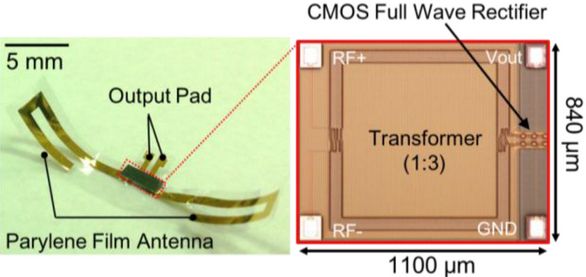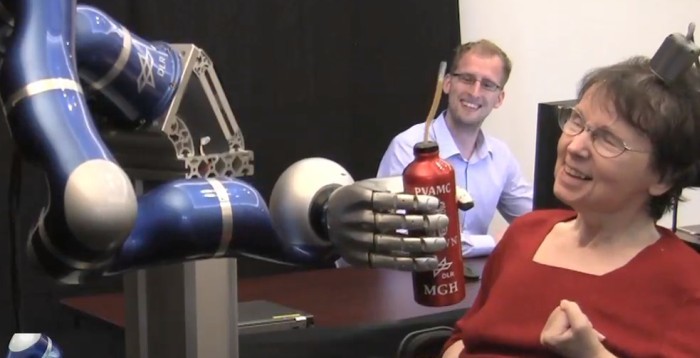The Japanese made a device for wireless transmission of electricity to the brain

When introducing various electronic devices into the brain, the problem of their power supply arises. Direct connection of wires through the hole in the skull is not the best option, because there is a risk of infections and leakage of cerebrospinal fluid. A group of Japanese engineers from Toehashi University of Technology offers a more practical approach that eliminates such risks and allows an object to move freely even with implanted brain-computer interface contacts.
The engineers used the packaging technique at the level of semiconductor wafers to introduce a high degree of integration chip (LSI) on an ultrathin pariline film with a thickness of only 5 micrometers, having mounted them using the Flip Chip method. The design includes an antenna on the same parylene and a rectifier for converting the radio frequency signal to direct current. All this is reminiscent of how RFID chips work.

')
The overall size of the device is 27 x 5 mm, and a flexible film can take the form of a surface.
Brain-computer interfaces (BCI) will greatly facilitate the lives of people, especially with impaired motor function. For example, in the photo below, a woman with the help of BCI controls the mechanical arm of a robot that feeds her aerated water.

Source: https://habr.com/ru/post/390349/
All Articles